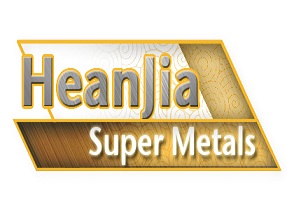
|
Heanjia Super-metals Co., Ltd.
|
Haynes 214 Perforated Metal
| Payment Terms: | T/T,L/C,D/A,D/P,WU |
| Place of Origin: | Beijing, China (Mainland) |
|
|
|
| Add to My Favorites | |
| HiSupplier Escrow |
Product Detail
The Haynes 214 Perforated Metal causes considerably high resistance to oxidation at the wide range of temperatures and can be utilized up to 955°C.
The Haynes 214 Perforated Metal causes considerably high resistance to oxidation at the wide range of temperatures and can be utilized up to 955°C or 1750°F and creates a secure layer of chromium and aluminum oxides to avoid further oxidation. It introduces supreme resistance to carburization, nitriding, and chlorides.
Perforated metal is basically a sheet metal consists of perforated, embossed or slotted plates. It is basically made by puncturing the material by using a tool. The perforated metal is made of specific metal that has holes made by a die. On the base of kind of metal, the ratio of hole size to material is adjusted. We have professional and expert die and tool makers who perform the task quickly.
Chemical Composition of Hayness 214 Perforated Metal
Physical Properties of Hayness 214 Perforated Metal
Characteristics of Hayness 214 Perforated Metal
Applications of Hayness 214 Perforated Metal
Perforated metal is basically a sheet metal consists of perforated, embossed or slotted plates. It is basically made by puncturing the material by using a tool. The perforated metal is made of specific metal that has holes made by a die. On the base of kind of metal, the ratio of hole size to material is adjusted. We have professional and expert die and tool makers who perform the task quickly.
We offer the perforated metal in the following shapes: Circle, square, triangle, hex, oval and various other shapes. We utilize the latest tools to puncture the holes in the different shapes making the process more economical and spectacular.
Chemical Composition of Hayness 214 Perforated Metal
Ni | Cr | Al | Fe | Mn | Si | Zr | B | Y | C |
75 % | 16% | 4.5% | 3% | 0.5% | 0.2% | 0.1% | 0.01% | 0.01% | 0.05% |
Physical Properties of Hayness 214 Perforated Metal
Density | 8.05 g/cm.3 |
Melting Temperature | 1355-1400°C |
electrical Resistivity | 135.9 microhm-cm |
Thermal Conductivity | 12.0 W/m-K |
Specific Heat | 452 J/Kg-K |
Mean Coefficient of Thermal expansion | 13.3X10-6m/m-°C |
Characteristics of Hayness 214 Perforated Metal
1.Optimum Ductility at room temperature
2.Exceptionally high resistance to corrosion at high temperatures
3.Resistance to oxidation
4.Resistance to carburization, nitriding, and chlorides.
Applications of Hayness 214 Perforated Metal
1.Gas Turbines
2.Furnace Flame Hoods
3.Incinerator Internals
Didn't find what you're looking for?
Post Buying Lead or contact
HiSupplier Customer Service Center
for help!
Related Search
Perforated Metal
Perforated Metal Sheet
Perforated Metal Mesh
Galvanized Perforated Metal
Galvanized Perforated Metal Mesh
Brass Perforated Metal
More>>

























